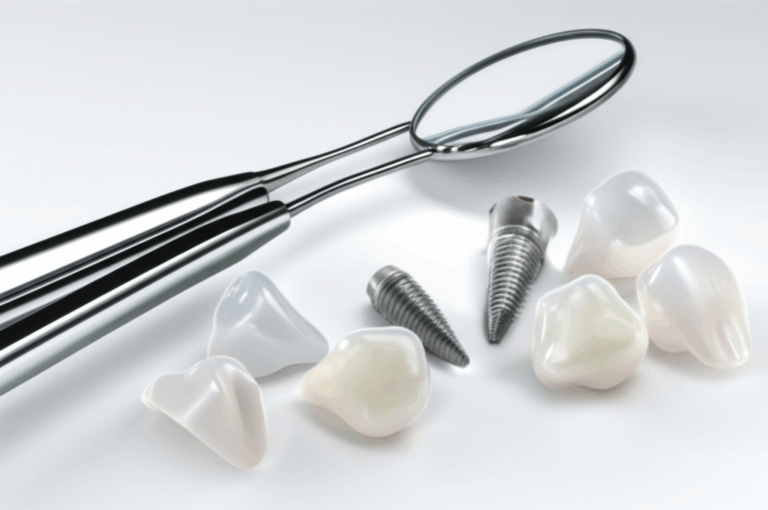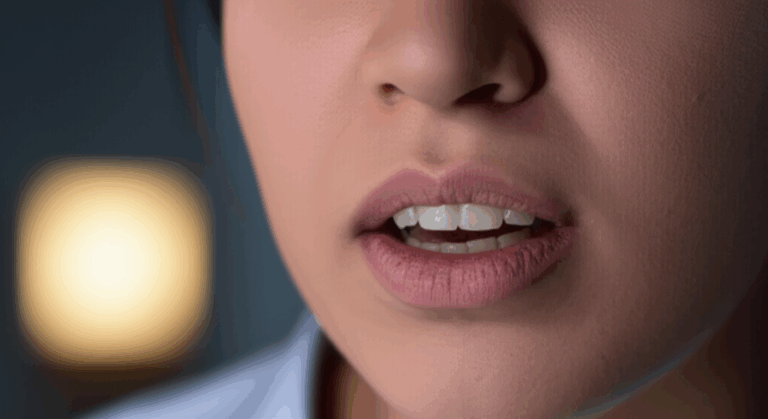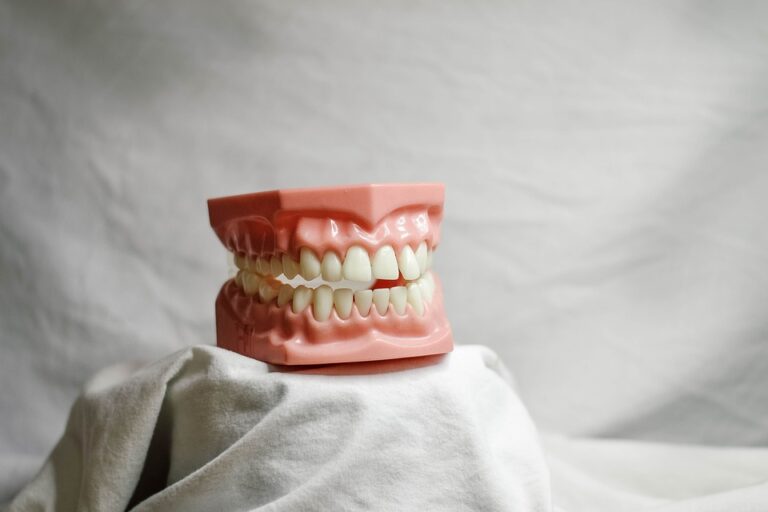
Can Dental Problems Cause Tension Headaches?
For years, a nagging headache was like my shadow. It felt like a tight band was always squeezing my head, the pressure started at my temples and wrapped all the way around. I thought I tried everything—more water, less coffee, new pillows, even seen a neurologist. But the headaches stayed, they were always there making me tired. The answer, turns out, was not in my head at all. It was in my mouth.
If you have tension headaches that wont go away and tried all the normal stuff, this article is for you. I’m gonna share my whole story of how I figured it out—from the times I got nowhere to the big ‘aha!’ moment in a dentist chair. I’ll explain how regular teeth problems can cause really bad headaches and, most important, show you the steps I took to finally feel better. This isn’t just doctor talk; its the real story of what I learned, and maybe it has the answer for your pain, too.
Article Outline
- My Headaches That Never Went Away: A Story You Might Know
- The “Aha!” Moment: Connecting My Teeth and My Head
- The Main Bad Guys: The Dental Issues That Cause Headaches
- Getting Better: My Guide to Handling Dental Headaches
- How to Know If Your Headache Is From Your Teeth: A Quick Checklist
- A Quick Warning: Don’t Diagnose Yourself
- My Headache-Free Life and How You Can Get There
Let me tell you how it was. I’d wake up most mornings and feel tired, not rested, with a small ache already starting in my temples. By lunch time, that ache would get much worse, a real tension headache. It wasn’t a sharp pain like a migraine, but a pressure that was always there. It felt like I was wearing a helmet two sizes too small. Some days, the pain would even go down to my neck and shoulders, and they would feel all tight and full of knots.
I did what anybody would do. I started with my regular doctor. We talked about stress, sleep, food, and drinking water. He told me they were probably “tension-type headaches,” which seemed right but also didn’t help at all. The advice was to handle stress and take pain pills from the store.
So I try. I downloaded meditation apps. I changed my afternoon coffee to herbal tea. I buyed a special chair for my desk. I drank water until I felt like a water balloon. The pain pills would help for a few hours, but the headache always came back. Like a guest who you don’t want and just won’t leave.
I was getting more and more frustrated. I couldn’t focus at work. I was grumpy with my family. The pain was always there, a little bit, and it was just so tiring. It felt like my life was in black and white. I saw a neurologist to make sure it wasn’t nothing more serious. After an MRI was clear (which was a big relief, of course), the official reason was the same: chronic tension headaches. The solution they offered? Stronger pills from the doctor. I felt like I was just covering up the problem, not fixing the real issue. It was a dead end, and I was started to lose hope.
The “Aha!” Moment: Connecting the Dots Between My Teeth and Head
The big change came from somewhere I never expected. I chipped a back tooth on some hard candy and had to make a dentist appointment. I wasn’t thinking about my headaches at all, I was just mad I had to get a tooth fixed.
During the check-up, my dentist, a really great woman named Dr. Evans, was checking my jaw. “You ever get headaches?” she asked, just normal like, while her fingers pressed on the muscles by my ears.
I almost laughed. “Only every single day,” I said.
She nodded slow, like she knew something. “And your jaw… is it ever sore when you wake up? Any clicking or popping sounds when you chew?”
I froze. Yes. I did notice a little clicking sound on my left side for a while but I thought it was just a weird thing. And my jaw was stiff in the mornings, I just thought it was from sleeping funny. I never, not one time, thought these things could be connected to the pressure in my head.
That’s when she told me about referred pain. She explained it with a easy example. Think of it like bad wiring in a house. A problem with the wires in the basement (your jaw) can make a light flicker in the upstairs bedroom (your head). The pain you feel isn’t where the problem is. Its being sent from somewhere else. My jaw muscles, she explained, were super strained, and that strain wasn’t just staying in my jaw. It was spreading out, and showing up as the tension headaches I had for years.
It was a total lightbulb moment. All of a sudden, everything made sense. All those months I spent worried about my head was a waste of time. The real bad guy was my mouth.
The Main Culprits: Unpacking the Dental Issues That Trigger Headaches
After Dr. Evans showed me this connection, I learned a lot about the teeth problems that can cause headaches. Turns out there’s a few main ones. I learned my problems was a mix of two of these, but just one of them can be enough to cause pain all the time.
TMD (Temporomandibular Joint Disorder): The Jaw’s Cry for Help
This was the big one for me. Dr. Evans said I had TMD. You probably heard it called “TMJ,” but the TMJ is just the joint itself—the temporomandibular joint. Its the complicated hinge on each side of your head that connects your jawbone to your skull. TMD, or temporomandibular joint disorder, is the name for when something goes wrong with that joint and the muscles that move it.
Think how much you use this joint. Everytime you talk, chew, yawn, or swallow, it’s working. Now, what if that joint is not lined up right or the muscles around it are always tight. Those muscles (the masseter and temporalis muscles) are huge, strong muscles that go up the side of your head to your temples.
When these muscles are overworked from TMD, they don’t just hurt in your jaw. They make trigger points that send pain right to your temples, your forehead, and even the back of your head. This is exactly what a tension headache is. For me, the sore jaw was a clue, but the biggest problem was the headache.
Bruxism (Teeth Grinding and Clenching): The Silent Nightly Battle
Dr. Evans pointed to my back teeth. “See how these are kinda flat?” she asked. “That’s a classic sign of bruxism.”
Bruxism is the doctor term for grinding or clenching your teeth. A lot of people, me too, do it without thinking, specialy at night when sleeping or when you’re stressed or focusing. I was a clencher. When I was focused on hard work, I’d notice my jaw was shut tight, my teeth pressed together hard.
Think about making a fist as hard as you can for eight hours. Your arm would be hurting bad, right? That’s what I was doing to my jaw muscles every night. All that pressure was making my jaw muscles tired and tight all the time.
This muscle squeezing is a direct cause of morning headaches. If you wake up a lot with a dull headache and a sore, tired jaw, bruxism is probably why. It’s a quiet fight happening in your mouth all night, and the headache is the damage it cause.
Malocclusion (A Bad Bite): When Your Teeth Don’t Align
Malocclusion is just a fancy word for a “bad bite.” It means your top and bottom teeth don’t fit together right when you close your mouth. This can be from crooked teeth, an overbite, an underbite, or even one missing tooth that made others move. When your bite is off, your jaw has to move in a weird way to chew or even just to rest. This small, constant extra work makes your jaw muscles work overtime, 24/7. They never get to relax in a good, normal spot.
This constant work leads to tired muscles and—yep—tension headaches. Sometimes, you need braces or other work to fix the bite. This can mean special lab work. For really tricky cases with the whole bite, a dentist might work with a special arch dental lab to make the models and things needed to slowly move the teeth to a better spot. A good bite means relaxed muscles, and relaxed muscles means no more pain sent to your head.
Tooth Infections and Abscesses: A Hidden Source of Agony
My problem was muscles, but a tooth infection can also be a big headache cause. An abscessed tooth—a pocket of pus from bacteria—can make a ton of pressure in your jawbone. The pain from an abscess isn’t always a sharp pain in just one tooth. The infection can bother big nerves in your face, like the trigeminal nerve. When this happens, the brain can get confused and think the pain is coming from somewhere else, like a bad, one-sided headache or a deep pain behind your eye. If your headache come with a fever, a swollen face, or a pounding pain in one tooth that won’t stop, you need to see a dentist right away.
Finding Relief: My Practical Guide to Managing Dental Headaches
Figuring out the problem was half the fight, but finding a fix was what really changed my life. It wasn’t a quick fix, but it was a process with a few steps. If you think your headaches are from your teeth, here’s what worked for me.
Step 1: Getting the Right Diagnosis
First thing: you can’t fix a problem you don’t get. My best advice is to find a dentist who knows about the link between TMD, bruxism, and headaches. Not all of them do. When you go, be ready. Don’t just say “my tooth hurts.” Tell them everything.
- Describe your headaches in detail: Where is the pain? What it feel like (dull, sharp, pressure)? When do you get them (morning, afternoon)?
- Mention any jaw symptoms: Talk about clicking, popping, soreness, stiffness, or any trouble chewing.
- Be honest about stress levels: Let them know if you think you might be clenching or grinding.
A good dentist will do a full check, feeling the muscles of your jaw and neck, checking how you move, and looking for wear on your teeth. They’ll probably take X-rays to get a clear picture of your jaw joint and rule out other stuff. Good dental care starts with a great diagnosis.
Step 2: Treatments That Made a Real Difference for Me
Based on me having TMD and bruxism, Dr. Evans made a treatment plan.
A Custom Night Guard: This was the biggest thing that helped. She took a mold of my teeth and had a custom occlusal splint, or night guard, made for me. This isn’t one of them cheap, boil-and-bite guards from the store. This was a perfectly fitted piece of hard plastic. It does two things: first, it protects my teeth so I dont grind them down. Second, and more important, it puts my jaw in a relaxed, a little bit open spot, which helps the muscles unlearn their bad habits and let go of the tightness. The very first morning I wore it, I woke up with no headache for the first time in years. It was amazing.
Dental Work to Improve My Bite: My chipped tooth was part of the problem. It made my bite a little off, so my jaw had to work around it. Dr. Evans fixed it with a crown. She explained why it had to be a perfect fit. A crown that’s even a tiny bit too high can mess up the whole system. She said her office works with a high-tech digital dental lab that uses scanners and computers to make super exact restorations. For front teeth, she said, they often use a special emax dental lab, which works with a pretty and strong material that looks just like a real tooth. Getting that crown made sure my bite was perfectly balanced again.
Physical Therapy and Stretches: My dentist gave me a list of easy jaw exercises to do a few times a day. They felt silly at first, but they worked. One of the best ones was the “Goldfish” exercise: I’d put one finger on my chin and another on my TMJ (right in front of my ear), then drop my lower jaw halfway and close. These small moves helped my jaw move better and made the muscles less tight.
- Stress Management: This was my homework. I had to pay more attention to my daytime clenching. I started putting sticky notes on my computer that said “Relax Your Jaw.” Every time I saw one, I would make myself unclench my teeth, let my jaw hang loose, and take a deep breath. It took practice, but it helped me break the habit.
How to Know If Your Headache Is Dental-Related: A Quick Checklist
Still not sure if your teeth are the problem for your head pain? Go through this quick list I made from my own experience. If you say “yes” to a few of these, its a strong sign you should call a dentist.
- Do you wake up with a headache a lot, specialy in the temples or forehead?
- Is your jaw sore, stiff, or tired in the morning?
- You have pain or soreness around your ears, but you know its not a ear infection?
- Does your jaw make a clicking, popping, or grinding sound when you open or close your mouth?
- Do your teeth look flat, chipped, or worn down?
- Does the headache pain feel worse when you are chewing, talking, or yawning?
- Have you noticed your neck and shoulder muscles are always tight and sore?
- Do you ever catch yourself clenching your teeth during the day?
A Word of Caution: Don’t Self-Diagnose
As much as I want to help, I need to be super clear about one thing: I am not a doctor or a dentist. I’m just a person who went through a long, painful time and learned a lot. My story is to help you and give you a new thing to check out, not to be professional medical advice.
Headaches can be a sign of many different things, and some are serious. Its very important to see a medical doctor to make sure its not other causes. But don’t stop there. If your doctor says you’re healthy but you’re still in pain, take the next step and see a dentist. Getting complete teeth information and a real check-up is the only way to know for sure. Think of it like a team for your health. Your doctor looks after your whole body, and your dentist is the expert for everything about your mouth, jaw, and how they affect the rest of you.
My Headache-Free Life and Your Path Forward
Today, my life is totally different. I still wear my night guard every single night, its part of my routine just like brushing my teeth. I pay attention to my jaw tension during the day and try to keep it relaxed. And the result? The constant, heavy headaches are gone. I might get a normal headache sometimes if I don’t drink enough water or I’m really tired, but the daily pain that used to run my life is just a memory.
My journey taught me a big lesson: our bodys are all connected. A problem in one small spot can cause huge, surprising problems somewhere else. For years, I was looking for a complicated answer for my headaches, when the answer was right under my nose—or really, inside my mouth.
If my story sounds like yours, I’m telling you not to give up hope. That headache that won’t go away might not be something you just have to “live with.” Take a better look at your dental health. It could be the missing piece to your health puzzle and your first step to a clear, pain-free life.








